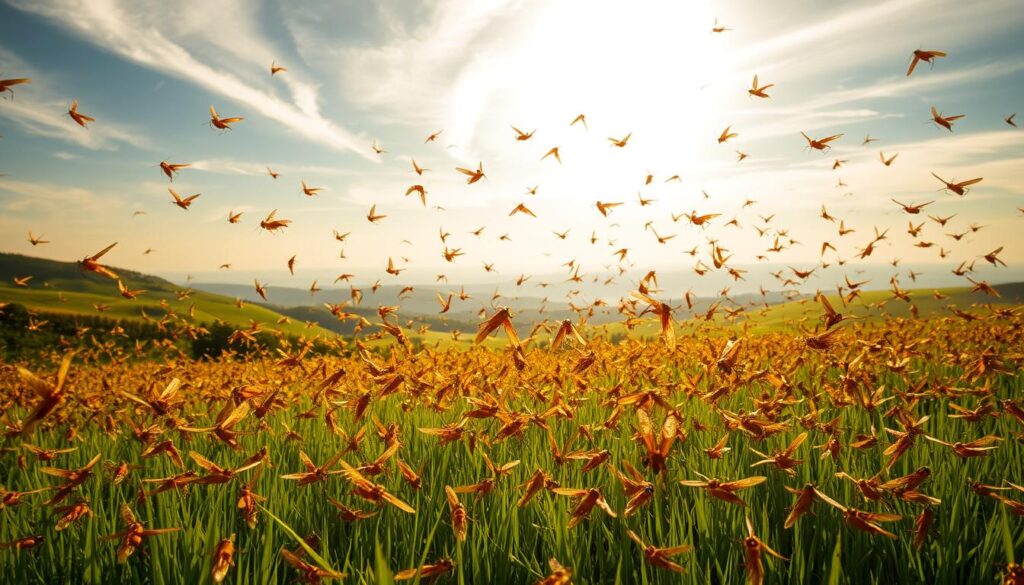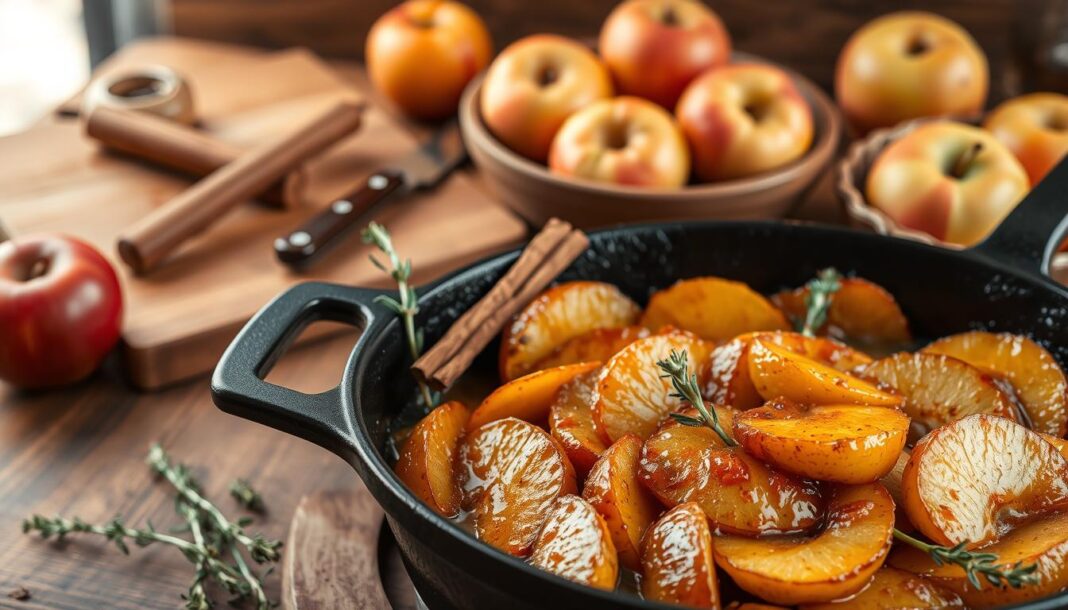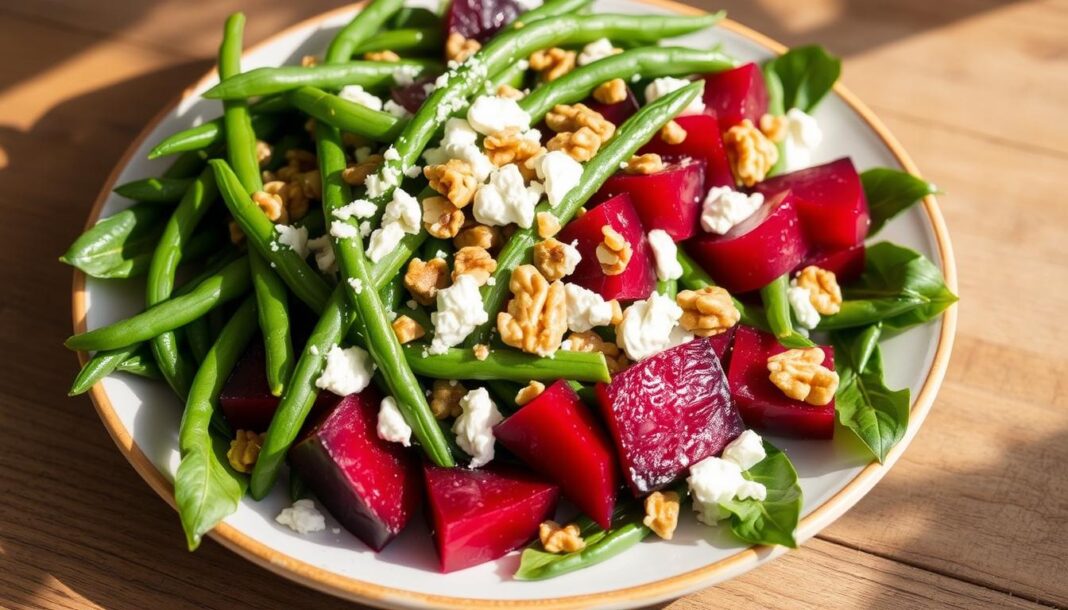Welcome to our comprehensive guide on preparing locusts, a fascinating culinary adventure that combines ancient traditions with modern cooking techniques. At Historical Foods, we are passionate about exploring the world of entomophagy – the practice of eating insects – and sharing our findings with fellow food enthusiasts.
Our authentic locust recipe is the result of extensive testing and research, aiming to make this unique ingredient accessible to everyone. In this article, we’ll not only share our recipe but also delve into why locusts are becoming increasingly relevant in contemporary cuisine, providing valuable information for the curious culinary explorer.
Key Takeaways
- Discover the basics of entomophagy and its growing popularity
- Learn how to prepare locusts for cooking
- Understand the nutritional benefits of incorporating locusts into your diet
- Explore various ways to season and cook locusts
- Gain confidence in cooking locusts with our step-by-step guide
The Surprising World of Edible Locusts
The world of edible locusts is fascinating, offering a blend of tradition and innovation. For centuries, locusts have been a part of culinary traditions in various cultures around the world.

A Sustainable Protein Source
Locusts are an excellent source of protein, making them a sustainable alternative to traditional livestock. They require less land, water, and feed, producing fewer greenhouse gas emissions.
Cultural Significance Around the World
Locusts have been consumed in many cultures, not just as a survival food during plagues but as a seasonal delicacy. The preparation methods vary significantly, reflecting local flavors and cooking techniques. From biblical references to contemporary cuisine in over 80 countries, locusts have held significant cultural and culinary importance.
Why Consider Locusts in Your Diet?
Embracing locusts as a food source can offer numerous benefits, from nutritional value to environmental sustainability. As we explore the advantages of incorporating locusts into your diet, it becomes clear that this unconventional protein source has much to offer.
Nutritional Benefits
Locusts are an excellent source of protein, rich in micronutrients and minerals. They provide a nutrient-dense alternative to traditional livestock, making them an attractive option for those seeking a healthier diet. With a remarkable nutritional profile, locusts can be a valuable addition to a balanced diet.
Environmental Advantages
Locusts are an ecologically logical choice, requiring significantly less water, land, and feed compared to conventional livestock.  Our analysis highlights several key environmental benefits, including reduced greenhouse gas emissions and efficient feed conversion. Specifically, locust farming produces approximately 1% of the greenhouse gases generated by cattle farming for an equivalent amount of protein.
Our analysis highlights several key environmental benefits, including reduced greenhouse gas emissions and efficient feed conversion. Specifically, locust farming produces approximately 1% of the greenhouse gases generated by cattle farming for an equivalent amount of protein.
- The ecological footprint of locust consumption is minimal, requiring less resources.
- Locusts require just 2kg of feed to produce 1kg of edible weight, compared to 8kg of feed for 1kg of beef.
- Harvesting locusts during natural population booms transforms pests into valuable food resources.
Our recipe approaches emphasize sustainable sourcing and minimal-waste preparation techniques, further enhancing the environmental advantages of locusts as a food source.
What Do Locusts Actually Taste Like?
Understanding the taste of locusts requires a look into their flavor profile and texture. According to Basson, “Locust has a taste reminiscent of quail, somehow,” and also shares similarities with sunflower seeds and shrimp.
Flavor Profile Comparisons
The flavor of locusts is multifaceted. Comparisons to known foods can help in understanding their unique taste. For instance, the flavor is often likened to quail and shrimp, indicating a potentially broad appeal.
Texture and Mouthfeel
The texture of locusts varies significantly based on the preparation method.
- Crispy when fried
- Chewy when boiled
- Tender when roasted
Different body parts also offer varying textures: the thorax is comparable to crab meat, while the legs provide a more fibrous experience.
| Preparation Method | Texture | Comparison |
|---|---|---|
| Fried | Crispy | Similar to fried shrimp shells |
| Boiled | Chewy | Like firm white fish |
| Roasted | Tender | Comparable to roasted poultry |

Our testing has shown that controlling cooking time is crucial for achieving the optimal texture, as overcooking can result in excessive dryness. The unique textural contrast between the crisp exterior and tender interior creates a multidimensional eating experience.
Essential Ingredients for Our Locust Recipe
Before diving into cooking locusts, it’s vital to gather the necessary ingredients and equipment. Our locust recipe is designed to be both accessible and enjoyable, and having the right components is crucial.
The Locusts
The primary ingredient, of course, is the locusts themselves. We recommend sourcing them from a reputable supplier to ensure quality and food safety.
Seasonings and Complementary Ingredients
To enhance the flavor, you’ll need various seasonings. For our seasoned flour, mix 4 tablespoons of flour with 3/4 teaspoon salt, a pinch of pepper, chili powder, a shake of ground coriander, and dried garlic granules.
Equipment You’ll Need
Several pieces of equipment are essential for preparing locusts. A large pot (at least 4-quart capacity) is necessary for boiling. A fine-mesh strainer or colander is required for draining. A heavy-bottomed skillet, preferably cast iron, is ideal for frying in oil. Sharp kitchen scissors will aid in removing wings and legs. A thermometer ensures the oil reaches the ideal frying temperature (350-375°F).
| Category | Item | Description |
|---|---|---|
| Main Ingredient | Locusts | Source from a reputable supplier |
| Seasonings | Flour, Salt, Pepper, Chili Powder, Ground Coriander, Dried Garlic Granules | For seasoned flour mixture |
| Equipment | Large Pot | At least 4-quart capacity for boiling |
| Equipment | Fine-mesh Strainer or Colander | For draining locusts after boiling |
| Equipment | Heavy-bottomed Skillet | Preferably cast iron for frying |
| Equipment | Sharp Kitchen Scissors | For removing wings and legs |
| Equipment | Thermometer | For monitoring oil temperature |
Preparing Your Locusts
To make our authentic locust recipe, you’ll need to start by properly preparing your locusts. This involves a couple of key steps to ensure they’re clean and ready for consumption.
Cleaning and Sorting
First, we need to clean and sort the locusts. Thorough cleaning improves not just the aesthetic appeal but also significantly enhances the flavor profile by removing bitter-tasting components.
Removing Heads, Wings, and Small Legs
Next, remove the heads, wings, and small legs. Grasp a locust firmly, twist and pull the head away to remove the digestive tract. Detach the wings and smaller legs, leaving the larger hind legs intact. This step transforms locusts into more approachable food items, making our locusts recipe more accessible.
The Authentic Locust Recipe: Boiling Method
Now that we’ve prepared our locusts, it’s time to dive into the boiling method, a crucial step in our authentic locust recipe. This process sets the foundation for achieving the perfect texture. Boiling locusts is a straightforward technique that requires attention to detail to achieve optimal results. We will guide you through creating the perfect broth and the precise boiling time and techniques.
Creating the Perfect Broth
To create the perfect broth, we recommend using a flavorful stock that complements the locusts without overpowering them. A simple vegetable or chicken stock works well. The key is to ensure the broth is at a full boil before adding the locusts. According to our recipe testing, a rich broth enhances the overall flavor profile of the dish.
Boiling Time and Techniques
When boiling locusts, timing is crucial. Cook them for precisely 3 minutes in boiling stock. During this time, occasionally stir the locusts gently to prevent clumping. The locusts will undergo a slight color change, indicating they are cooked. After boiling, immediately drain and rinse them with cool water.
The process involves throwing the locusts into the boiling stock whole and cooking for about 3 minutes. Here are the key steps to follow:
- Once the broth reaches a full boil, carefully add the cleaned locusts and maintain a steady boil for precisely 3 minutes. Overcooking can result in a mushy texture.
- During boiling, occasionally stir the locusts gently to ensure even cooking and prevent clumping.
- The locusts will change color slightly, becoming a more uniform tone, which is a visual indicator of proper cooking.
- After boiling, immediately drain the locusts through a colander and rinse briefly with cool water to halt the cooking process.
- This precise boiling technique creates the ideal texture foundation for the subsequent frying stage.
| Step | Action | Timing |
|---|---|---|
| 1 | Bring broth to a boil | Until boiling |
| 2 | Add locusts | 0 minutes |
| 3 | Boil locusts | 3 minutes |
| 4 | Drain and rinse | Immediately after boiling |
For more inspiration on cooking locusts, you can visit this article on innovative locust recipes.
Crispy Fried Locusts: The Next Step
Now that we’ve boiled our locusts to perfection, it’s time to take them to the next level with a crispy fried recipe. This step adds a delightful crunch and flavor, elevating the dish to a whole new level.
Seasoned Flour Mixture
To achieve the perfect coating, we use a seasoned flour mixture. This not only adds flavor but also helps in creating a crispy exterior. The key is to ensure the locusts are coated lightly but evenly.
Frying to Golden Perfection
Frying the locusts requires some precision. Heat high-quality olive oil to precisely 350°F (175°C) in a heavy-bottomed skillet. Maintaining this temperature is crucial for achieving the perfect crisp exterior without burning.
- Dip each boiled locust first in a beaten egg, then in the seasoned flour mixture, ensuring complete but light coverage while shaking off any excess coating.
- Fry the coated locusts in small batches for 1½ to 2 minutes, turning once midway through cooking until they achieve a golden-brown color reminiscent of perfectly fried chicken.
- The oil should bubble gently around each locust—vigorous bubbling indicates the oil is too hot and may burn the coating before the interior warms through.
- After frying, transfer the locusts to a paper towel-lined plate to drain excess oil, then serve immediately while still hot and crispy for the optimal textural experience.
| Frying Time | Oil Temperature | Result |
|---|---|---|
| 1½ – 2 minutes | 350°F (175°C) | Golden Brown |
| Less than 1½ minutes | Too Low | Undercooked |
| More than 2 minutes | Too High | Burnt |
By following these steps and using the right recipe, you can achieve crispy fried locusts that are sure to impress.
Alternative Cooking Methods
Beyond boiling and frying, locusts can be prepared in various innovative ways. We explore alternative cooking methods that can enhance the locust-eating experience, providing different textures and flavors.
Locust Schnitzel Variation
To create a locust schnitzel, clean locusts are dipped in flour, then egg, and finally seasoned bread crumbs before being fried in oil. This method provides a crispy exterior and a tender interior, making it a delightful variation to the traditional recipe.
Tempura-Style Locusts
For tempura-style locusts, a light batter is prepared using ice-cold sparkling water, all-purpose flour, and a pinch of salt. The locusts are then coated in this batter and fried in hot oil until crispy and golden. Some key points to achieve perfect tempura-style locusts include:
- The batter’s delicate, airy texture provides a textural contrast to the locusts while allowing their natural flavor to shine through.
- Maintaining the batter’s cold temperature is crucial for crispiness.
- Frying at 360°F (182°C) for 45-60 seconds achieves the perfect golden crisp.
- Serve immediately with traditional tempura dipping sauce and tempura-fried seasonal vegetables like sweet onions, creating a cohesive Japanese-inspired presentation.
Serving Suggestions and Pairings
To enhance the flavor and texture of locusts, consider pairing them with complementary sauces and sides. We have found that the right accompaniments can significantly elevate the dining experience.
Complementary Sauces
Serve locusts with a lemony tahini sauce or a za’atar pesto made more lemony than usual. These sauces complement the nutty flavor of locusts, adding a rich and tangy dimension to the dish.
Complete Meal Ideas
Transform your locusts into a complete meal by serving them atop a fresh salad of mixed greens, roasted corn, and pickled onions dressed with a light vinaigrette. Alternatively, serve crispy locusts as a taco filling with warm corn tortillas, lime wedges, diced vegetables, and fresh cilantro.
| Meal Idea | Key Ingredients | Description |
|---|---|---|
| Locust Salad | Mixed greens, roasted corn, pickled onions | A fresh and healthy salad with a protein-rich twist. |
| Taco Filling | Corn tortillas, locusts, lime, vegetables, cilantro | A Mexican-inspired dish with a crunchy and flavorful filling. |
| Balanced Plate | Locusts, whole grains, seasonal vegetables | A well-rounded meal that pairs locusts with nutritious sides. |
Conclusion: Embracing Locusts as Sustainable Food
By embracing locusts as a food source, we’re not only discovering new flavors but also contributing to a more sustainable food system. Our authentic locust recipe showcases their unique taste. With their impressive nutritional profile and minimal environmental impact, locusts are a forward-thinking protein choice. Try incorporating them into dishes like stir-fries with onion to explore new culinary possibilities, as discussed in articles like this piece on entomophagy.


